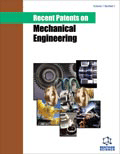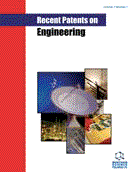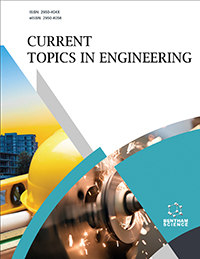Abstract
Based on the plastoelasticity theory, the computation model of brake shoe for braking is established and the numerical analysis of the braking process of brake shoe for locomotive is carried out. The simulation result shows that maximum stress in no-load condition is apparently smaller than the stress in full-load condition. A combination of local friction surface temperature, local friction intensity, heat of the deformation of the friction partner causes the wear of the break shoe. Besides, the displacement fluctuation quantity with a constant friction coefficient is found to be small. The stress born by the brake shoe in the analysis step begins to increase and then tends to be stable, but with increasing friction, its internal stress increases along with the temperature. This kind of numerical simulation can provide a theoretical basis for fabrication of high friction coefficient composite brake shoe for locomotives, which reduce the experimental cost. Recent patents on the analysis of brake shoe methods are also addressed.
Keywords: Brake shoe, displacement field, locomotives, simulation, stress field, three dimensional.
Recent Patents on Mechanical Engineering
Title:Three Dimensional Stress Field Analysis of Brake Shoe for Locomotives during Braking Process
Volume: 9 Issue: 1
Author(s): Bin Li
Affiliation:
Keywords: Brake shoe, displacement field, locomotives, simulation, stress field, three dimensional.
Abstract: Based on the plastoelasticity theory, the computation model of brake shoe for braking is established and the numerical analysis of the braking process of brake shoe for locomotive is carried out. The simulation result shows that maximum stress in no-load condition is apparently smaller than the stress in full-load condition. A combination of local friction surface temperature, local friction intensity, heat of the deformation of the friction partner causes the wear of the break shoe. Besides, the displacement fluctuation quantity with a constant friction coefficient is found to be small. The stress born by the brake shoe in the analysis step begins to increase and then tends to be stable, but with increasing friction, its internal stress increases along with the temperature. This kind of numerical simulation can provide a theoretical basis for fabrication of high friction coefficient composite brake shoe for locomotives, which reduce the experimental cost. Recent patents on the analysis of brake shoe methods are also addressed.
Export Options
About this article
Cite this article as:
Li Bin, Three Dimensional Stress Field Analysis of Brake Shoe for Locomotives during Braking Process, Recent Patents on Mechanical Engineering 2016; 9 (1) . https://dx.doi.org/10.2174/2212797609666151207195709
| DOI https://dx.doi.org/10.2174/2212797609666151207195709 |
Print ISSN 2212-7976 |
| Publisher Name Bentham Science Publisher |
Online ISSN 1874-477X |
 28
28 3
3
- Author Guidelines
- Bentham Author Support Services (BASS)
- Graphical Abstracts
- Fabricating and Stating False Information
- Research Misconduct
- Post Publication Discussions and Corrections
- Publishing Ethics and Rectitude
- Increase Visibility of Your Article
- Archiving Policies
- Peer Review Workflow
- Order Your Article Before Print
- Promote Your Article
- Manuscript Transfer Facility
- Editorial Policies
- Allegations from Whistleblowers
- Announcements























